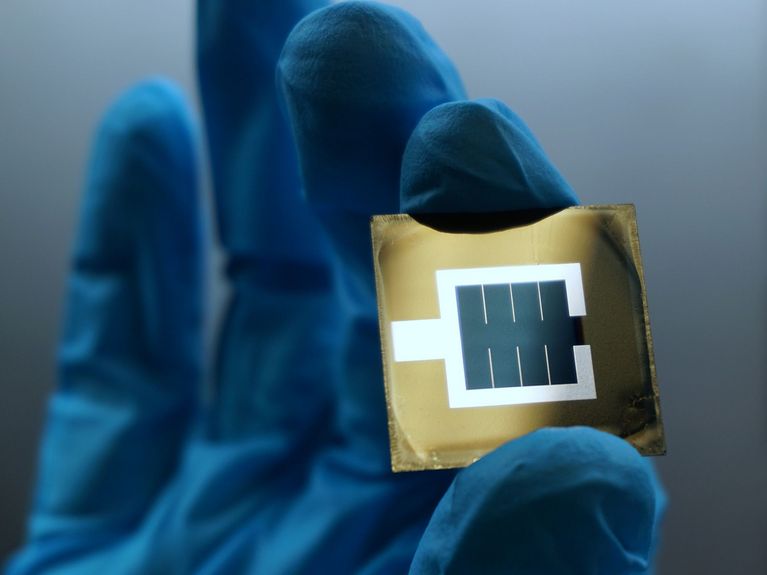
Story #02
Solar Cells – A Success Story Made by Helmholtz
What was written off as an expensive technology for idealists thirty years ago is now the most affordable way to produce electricity: solar modules. Three Helmholtz Centers have been pivotal in driving their development – and are currently investigating new semiconductive materials that can put out significantly more electricity in relation to surface area.
The numbers speak for themselves: whereas a solar module with a peak output of one kilowatt cost more than 10,000 euros in 1990, today a model with the same output costs roughly 300 euros. But the real breakthrough isn’t just about the price, but especially the technological performance: today’s solar cells provide substantially more energy than their predecessors.
Three Helmholtz Centers have contributed to this success story: with innovative funding tools, the Association has created a unique research landscape for solar energy. In this regard, close collaboration between Centers has proven to be the key to success.
Working together, the Helmholtz-Zentrum Berlin (HZB), Forschungszentrum Jülich and Karlsruhe Institute of Technology (KIT) helped create an excellent research infrastructure for photovoltaics in Europe, e.g. by establishing materials databases and standardized methods for classifying these materials, which massively accelerates technology transfer.
In materials research in particular, the Helmholtz Centers have made pioneering contributions: whereas crystalline silicon was initially the only material available, over the past years Helmholtz teams have worked to ensure that today’s developers have a fascinating palette of materials and architectures to choose from.
For instance, Helmholtz experts were among the first to recognize the potential of perovskite materials for photovoltaics – which is also why today their work on perovskite solar cells, and on combining silicon and perovskite to create “tandem” solar cells, is at the forefront of international research. In recognition of their achievements, the relevant teams at the HZB, together with a group from Forschungszentrum Jülich, received the 2023 Helmholtz High Impact Award.
Helmholtz High Impact Award 2023
Tandem solar cells, made of two different semiconductive materials, have demonstrated astounding efficiency: the HZB has already set a number of records using silicon-perovskite tandem solar cells and until recently also held the world record for CIGS-perovskite tandem solar cells.
Further, at the Helmholtz Institute Erlangen-Nürnberg (HI ERN), which is part of Forschungszentrum Jülich, a team of experts demonstrated how Artificial Intelligence can accelerate the search for new semiconductive molecules for perovskite solar cells. They also developed an efficient and environmentally friendly process for recycling the material.
As these successes show: though silicon solar cells still dominate the market, tandems promise the next revolutionary change. This new generation of solar cells will shatter the old limits on efficiency, paving the way for completely new fields of application – a major boost for the energy transition, made by Helmholtz.
Picture: Johannes Beckedahl/Lea Zimmermann/HZB